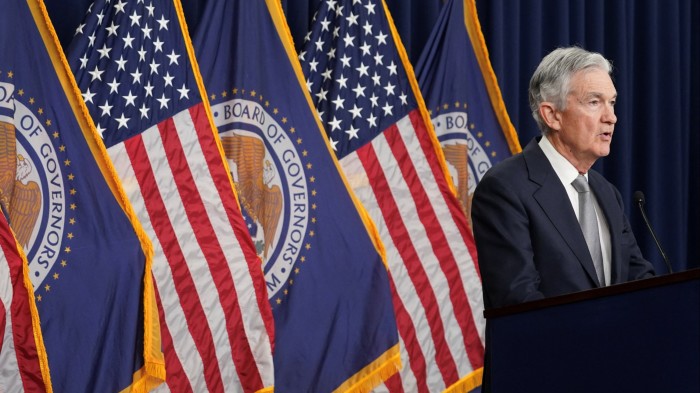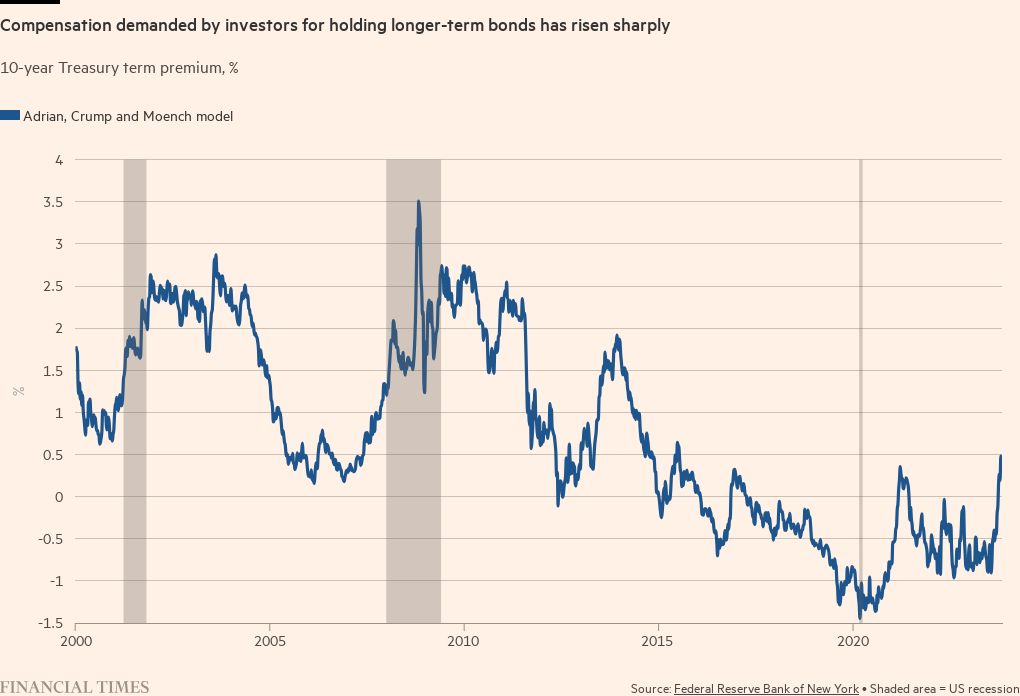Bond yields signal the end of the new normal

Roula Khalaf, Editor of the FT, selects her favourite stories in this weekly newsletter.
The writer is chief US economist at Brevan Howard
Predicting precisely when markets will reflect macro forces is nearly impossible. As economist Rudiger Dornbusch quipped: “In economics things take longer to happen than you think they will, and then they happen faster than you thought they could.”
But investors sooner or later face an important adjustment — all assets will need to reprice because of the end of three big trends.
In the wake of the global financial crisis, markets embraced a shift towards low and stable inflation. As a result, interest rates fell to levels not seen since the second world war — the “new normal”. Policymakers took advantage of what seemed like a free lunch by pushing interest rates down further still and pumping up the economy with tax cuts and expanded government spending.
But not anymore. Fiscal space is curtailed when interest rates exceed the economy’s potential growth rate, as is happening now. Consequently, an adverse feedback loop develops: markets have to digest rollovers of debt at elevated rates, which makes budget deficits spiral upward. Monetary policy is also constrained. In the past, investors expected a Fed “put” with rate cuts from the Federal Reserve whenever threats to growth emerged. With inflation above target, central bankers are unable to smooth shocks to the real economy or financial market ructions. The era of the Fed “put” is over.
At the same time, two favourable structural forces in the global economy are ending. First, President Xi Jinping’s “Chinese Dream” has ended the 40-year “to get rich is glorious” era in China. Going forward, China will emphasise state-led growth, common prosperity and national security. After powering global growth for decades, Chinese economic growth will slow and, as a result, fewer of its financial reserves will be recycled into international markets. China’s contribution to reducing global inflation in recent decades is also likely to diminish.
Additionally, the geopolitical landscape is increasingly dangerous. In 1989, Francis Fukuyama developed the idea of the “End of History”. The west won the cold war and that was meant to mark the triumph of liberal democracy. But geopolitical conflict and tensions are back — from Ukraine to Taiwan and now Israel. A new landscape of greater geopolitical competition will mean higher inflation and bigger budget deficits.
These three “ends” are plain enough to see. What are the implications for investors?
The dramatic rise in long-term interest rates since mid-year is a useful case study. For the past couple of decades, the term premium — the compensation that investors require to buy longer duration assets — had been trending lower and even turning negative in recent years. Demand for long-duration assets was so large that investors were willing to forego protection and actually pay up for yield.
There were three primary reasons for negative term premia. First, low inflation and falling inflation volatility made longer-term debt attractive. Second, the Fed’s ever-expanding rounds of quantitative easing created a super-sized non-economic buyer of debt. Other central banks followed suit, amplifying the depressing effect on yields. Finally, bond returns hedged stock returns which made it attractive for risk-seeking investors to hold riskless assets. Bonds seemed like the perfect hedge for stocks because every time a risk to the economy emerged central banks rode to the rescue with rate cuts and QE.
No Fed “put” means no zero rates, no promises of low rates in the future, and certainly no QE to rescue investors when they suffer losses.
A higher cost of capital will shorten the time tech start-ups have to reach profitability. The trend higher in price-earnings valuation multiples may reverse as investors face the prospect of more frequent and larger losses in downturns.
Higher mortgage rates will put housing into a deep freeze and eventually weigh on house prices. Governments will face pressure to cut deficits and have little latitude to invest in public goods such as the green energy transition.
This “new abnormal” will be characterised by higher and more volatile inflation as well as a return to structurally higher interest rates. In retrospect, the new normal looks like a unique period of historically depressed interest rates after the financial crisis. In the future, investors will have to learn anew how to operate without a fiscal or monetary safety net.

Comments